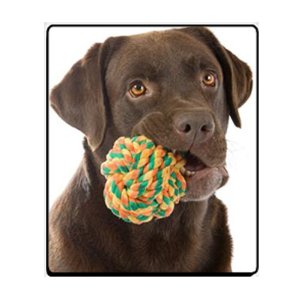You hate to admit it, but your furry pal is getting a little older. You want to ensure that your pet is happy and healthy for many years to come. You have heard all of the hype about the new dog diets for older pets. Is there really a difference between dog food for adult dogs and kibble recommended specifically for seniors? How do you know when to switch your pet to a different diet?
The best resource for information about dog diets is your pet’s veterinarian. Only you and your vet know the specific needs of your pet the best. Discuss with your vet your concerns and questions. He or she will be able to advise you on what changes, if any, need to be made to your dog’s diet.
If your older dog does not have any health problems and maintains a healthy weight, there is no need to change your dog’s diet from adult to senior dog food. On the other hand, if your dog has trouble keeping the weight off or digestive issues, you may need to switch. If weight is the only issue, consider slightly lowering the amount of dog food you give to your pet. This may be all the change your dog’s diet requires.
A senior dog is classified as a dog in the last third of their life span. Larger dogs, for instance a Great Dane, live to be about 9 years old. Around the sixth year of life, you may want to consider a senior dog’s diet. A poodle, on the other hand wouldn’t reach senior status until
About age ten due to the longer life expectancy. Primarily, the decision to change your dog’s diet should be based on health condition rather than actual age in years. Your vet will help you to determine when the right time is to alter your dog’s diet.
Dog food especially prepared for senior dogs typically has less calories. This helps to combat any weight issues. The senior dog food also contains more fiber for the different needs in your dog’s diet. As dogs age, they tend to suffer from constipation. This extra fiber will help remedy this problem.
Renal failure can be another medical problem for senior dogs. How can your dog’s diet help this problem? Reducing the amount of protein in your dog’s diet will decrease the work load for the kidneys. For this reason, senior dog food frequently has lower protein content than regular adult formulas.
Whenever possible, allow your dog to eat dry dog food to encourage excellent dental health. The dry kibble helps to reduce plaque and tartar buildup. If your older pet refuses to eat the food dry, you may need to moisten it with water or purchase moist, canned varieties.
If your vet recommends, supplements may be helpful as part of your senior dog’s diet. Some pets are unable to eat properly due to oral issues. Other older pets are unable to gather all of the nutrients from their food for various health reasons. Supplements such as daily vitamins and glucosamine can be beneficial to maintaining a healthy diet for your dog.
Glucosamine helps to encourage joint health. For senior dogs, glucosamine can combat arthritis and hip displasia.
Vitamins C, A, and E may prevent the natural aging process and encourage better health for senior dogs. Talk to your vet about adding such supplements to your dog’s diet.
You want what is best for your pet. Your senior dog needs to have a diet that meets their special nutritional requirements. You and your vet can work together to decide what is the best diet for your senior dog. Your dog’s diet directly affects his or her health. Take care of your pet by monitoring your dog’s diet closely with the aid of your veterinarian.
Is There a Difference in a Senior Dog Diet courtesy of Dog Articles.
Looking for a great gift idea? Who wouldn’t love a beautiful holiday magnet showcasing their favorite breed? Check out all of the great doggie gift ideas on Amazon.com –doggieoftheday@amazon.com












